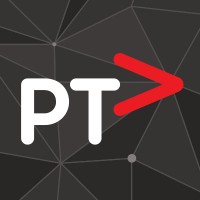
Public Transport Victoria Company Cyber Security Posture
ptv.vic.gov.auPublic Transport Victoria (PTV) is the statutory authority behind our state's public transport system, enabling more than 10 million journeys on trains, trams, buses and coaches every single week. Our vision is to deliver a safe and inclusive public transport network that all passengers value and choose to use. Victoria is Australia's fastest growing state, so we at PTV are passionately working to meet these growing demands, from Mildura to Melbourne, Traralgon to Torquay, and every place in between. Every day our staff search for new ways to help maintain Melbourne's status as one of the world's most liveable cities and improve the regional rail network where passenger growth has increased by 130 per cent in the past decade alone. Our workplace facilitates innovation and fosters creativity as we work towards delivering world class public transport for Victorian passengers now and in the future. We are proud to be an equal opportunity employer that supports diversity and flexibility. PTV sits within the Department of Transport and works with a range of partners to deliver a simpler, more coordinated transport system for Victoria.
PTV Company Details
public-transport-victoria
177 employees
20409
none
Transportation/Trucking/Railroad
ptv.vic.gov.au
Scan still pending
PUB_2614297
In-progress
Between 200 and 800
This score is AI-generated and less favored by cyber insurers, who prefer the TPRM score.
 PTV Global Score
PTV Global Score.png)

Public Transport Victoria Company Scoring based on AI Models
| Model Name | Date | Description | Current Score Difference | Score |
|---|---|---|---|---|
| AVERAGE-Industry | 03-12-2025 | This score represents the average cybersecurity rating of companies already scanned within the same industry. It provides a benchmark to compare an individual company's security posture against its industry peers. | N/A | Between 200 and 800 |
Public Transport Victoria Company Cyber Security News & History
| Entity | Type | Severity | Impact | Seen | Url ID | Details | View |
|---|---|---|---|---|---|---|---|
| Public Transport Victoria | Breach | 85 | 4 | 08/2019 | PUB0810423 | Link | |
Rankiteo Explanation : Attack with significant impact with customers data leaksDescription: Public Transport Victoria was found in breach of the Privacy and Data Protection Act after a dataset containing a record of 1.8 billion myki events was provided without sufficient de-identification. The dataset contained a record of ""touch on"" and ""touch off"" events recorded by the myki system amounting to approximately 1.8 billion events across the 15 million distinct Myki cards. Each event record comprises multiple data points, including date and time, location information, card identifier a unique number assigned to each Myki card. The data allowed for individuals to be re-identified, and their travel activity for the three years exposed. | |||||||
Public Transport Victoria Company Subsidiaries

Public Transport Victoria (PTV) is the statutory authority behind our state's public transport system, enabling more than 10 million journeys on trains, trams, buses and coaches every single week. Our vision is to deliver a safe and inclusive public transport network that all passengers value and choose to use. Victoria is Australia's fastest growing state, so we at PTV are passionately working to meet these growing demands, from Mildura to Melbourne, Traralgon to Torquay, and every place in between. Every day our staff search for new ways to help maintain Melbourne's status as one of the world's most liveable cities and improve the regional rail network where passenger growth has increased by 130 per cent in the past decade alone. Our workplace facilitates innovation and fosters creativity as we work towards delivering world class public transport for Victorian passengers now and in the future. We are proud to be an equal opportunity employer that supports diversity and flexibility. PTV sits within the Department of Transport and works with a range of partners to deliver a simpler, more coordinated transport system for Victoria.
Access Data Using Our API

Get company history
.png)
PTV Cyber Security News
Democratic Republic of the Congo Travel Advice & Safety
We now advise do not travel overall due to the volatile security situation and the threat of conflict, violent protests, terrorism and ...
Principal Freight Network
The Principal Freight Network (PFN) is a framework that identifies and protects Victoria's key road and rail freight routes and places.
'Nightsleeper-style' cyber attack hits 20 railway stations: Passengers logging on to public wi-fi at UK's bigg
Nineteen major railway stations across Britain including ten in London have been hit by a major cyber attack impacting their public wi-fi ...
Public Transport Victoria in breach of Privacy Act after re-identifiable data on over 15m myki cards released
Public Transport Victoria found in breach of Privacy and Data Protection Act after a dataset containing a record of 1.8 billion myki events ...
Zimbabwe Travel Advice & Safety
We've reviewed our advice and continue to advise exercise a high degree of caution in Zimbabwe due to the threat of crime and the risk of civil unrest.
Man arrested after 'Islamophobic' cyber attack hits London stations Wi-Fi
A man has been arrested after London's biggest train stations had their Wi-Fi networks hacked by a cyber-attack displaying Islamophobic messages ...
TSA, Canada partner to protect passenger rail
“Surface transportation faces diverse physical threats due to the open nature of rail systems,” said Transportation Security Administration ...
Scammers Exploit Myki Cards, Stealing From Victorian Commuters
Public Transport Victoria (PVT) confirms scammers are exploiting unregistered myki cards to get refunds. At least 14 people have had money ...
Australians have been hit by a worldwide tech outage. Here's what we know
An unprecedented IT outage has affected major institutions in Australia and internationally, potentially one of the biggest global outages ever experienced.

PTV Similar Companies
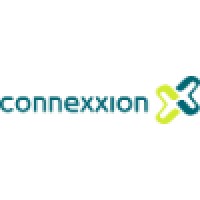
Connexxion
Connexxion wil de beste keuze zijn op het gebied van regionaal personenvervoer in Nederland. Met zorg brengen wij mensen op hun bestemming met toegankelijk, duurzaam en veilig vervoer! Wij willen mobiliteit voor iedereen toegankelijk en beschikbaar houden. Want wij geloven dat mobiliteit essentieel

Swift Transportation
Swift Transportation is the largest full-truckload motor carrier in North America. Based in Phoenix, Arizona, the Swift terminal network includes over thirty full-service facilities in the United States and Mexico. Swift provides a full line of service solutions, including linehaul, flatbed, intermo
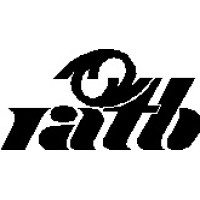
RATB
Collective Transport Company from Bucharest It operates a complex network of buses, trams and trolleybuses – in fact, all public transport except the Bucharest Metro, which is managed by Metrorex. While owned entirely by the City Council, RATB is an autonomous company. The RATB transport servi
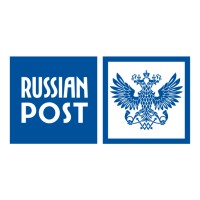
Russian Post
Russian Post is one of the largest internationally operating logistics groups and the national postal service provider of the Russian Federation. We offer a broad and multimodal portfolio of domestic and international e-commerce, parcel shipping and logistics solutions, by road, sea and air. With a
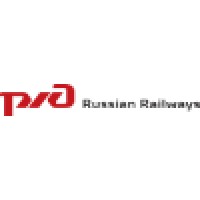
Russian Railways
Russian Railways is Russia’s leading railway company and one of the largest companies in the global transport sector. The Company is a natural monopoly and fully owned by the Russian Federation. Our primary goal is to meet the state’s rail transport and employment needs, and to provide services to p

SBB CFF FFS
We shape the mobility of the future – simple, personal, connected. SBB’s comprehensive service contract allows us to offer a wide range of exciting careers in all areas of business. Thanks to this variety, many different career paths are possible, which we support through education and training o

Frequently Asked Questions (FAQ) on Cybersecurity Incidents
PTV CyberSecurity History Information
Total Incidents: According to Rankiteo, PTV has faced 1 incidents in the past.
Incident Types: The types of cybersecurity incidents that have occurred include ['Breach'].
Total Financial Loss: The total financial loss from these incidents is estimated to be {total_financial_loss}.
Cybersecurity Posture: The company's overall cybersecurity posture is described as Public Transport Victoria (PTV) is the statutory authority behind our state's public transport system, enabling more than 10 million journeys on trains, trams, buses and coaches every single week. Our vision is to deliver a safe and inclusive public transport network that all passengers value and choose to use. Victoria is Australia's fastest growing state, so we at PTV are passionately working to meet these growing demands, from Mildura to Melbourne, Traralgon to Torquay, and every place in between. Every day our staff search for new ways to help maintain Melbourne's status as one of the world's most liveable cities and improve the regional rail network where passenger growth has increased by 130 per cent in the past decade alone. Our workplace facilitates innovation and fosters creativity as we work towards delivering world class public transport for Victorian passengers now and in the future. We are proud to be an equal opportunity employer that supports diversity and flexibility. PTV sits within the Department of Transport and works with a range of partners to deliver a simpler, more coordinated transport system for Victoria..
Detection and Response: The company detects and responds to cybersecurity incidents through {description_of_detection_and_response_process}.
Incident Details
Incident 1: Ransomware Attack
Title: {Incident_Title}
Description: {Brief_description_of_the_incident}
Date Detected: {Detection_Date}
Date Publicly Disclosed: {Disclosure_Date}
Date Resolved: {Resolution_Date}
Type: {Type_of_Attack}
Attack Vector: {Attack_Vector}
Vulnerability Exploited: {Vulnerability}
Threat Actor: {Threat_Actor}
Motivation: {Motivation}
Incident 2: Data Breach
Title: {Incident_Title}
Description: {Brief_description_of_the_incident}
Date Detected: {Detection_Date}
Date Publicly Disclosed: {Disclosure_Date}
Date Resolved: {Resolution_Date}
Type: {Type_of_Attack}
Attack Vector: {Attack_Vector}
Vulnerability Exploited: {Vulnerability}
Threat Actor: {Threat_Actor}
Motivation: {Motivation}
Common Attack Types: As of now, the company has not encountered any reported incidents involving common cyberattacks.
Identification of Attack Vectors: The company identifies the attack vectors used in incidents through {description_of_identification_process}.
Impact of the Incidents
Incident 1: Ransomware Attack
Financial Loss: {Financial_Loss}
Data Compromised: {Data_Compromised}
Systems Affected: {Systems_Affected}
Downtime: {Downtime}
Operational Impact: {Operational_Impact}
Conversion Rate Impact: {Conversion_Rate_Impact}
Revenue Loss: {Revenue_Loss}
Customer Complaints: {Customer_Complaints}
Brand Reputation Impact: {Brand_Reputation_Impact}
Legal Liabilities: {Legal_Liabilities}
Identity Theft Risk: {Identity_Theft_Risk}
Payment Information Risk: {Payment_Information_Risk}
Incident 2: Data Breach
Financial Loss: {Financial_Loss}
Data Compromised: {Data_Compromised}
Systems Affected: {Systems_Affected}
Downtime: {Downtime}
Operational Impact: {Operational_Impact}
Conversion Rate Impact: {Conversion_Rate_Impact}
Revenue Loss: {Revenue_Loss}
Customer Complaints: {Customer_Complaints}
Brand Reputation Impact: {Brand_Reputation_Impact}
Legal Liabilities: {Legal_Liabilities}
Identity Theft Risk: {Identity_Theft_Risk}
Payment Information Risk: {Payment_Information_Risk}
Average Financial Loss: The average financial loss per incident is {average_financial_loss}.
Commonly Compromised Data Types: The types of data most commonly compromised in incidents are {list_of_commonly_compromised_data_types}.
Incident 1: Ransomware Attack
Entity Name: {Entity_Name}
Entity Type: {Entity_Type}
Industry: {Industry}
Location: {Location}
Size: {Size}
Customers Affected: {Customers_Affected}
Incident 2: Data Breach
Entity Name: {Entity_Name}
Entity Type: {Entity_Type}
Industry: {Industry}
Location: {Location}
Size: {Size}
Customers Affected: {Customers_Affected}
Response to the Incidents
Incident 1: Ransomware Attack
Incident Response Plan Activated: {Yes/No}
Third Party Assistance: {Yes/No}
Law Enforcement Notified: {Yes/No}
Containment Measures: {Containment_Measures}
Remediation Measures: {Remediation_Measures}
Recovery Measures: {Recovery_Measures}
Communication Strategy: {Communication_Strategy}
Adaptive Behavioral WAF: {Adaptive_Behavioral_WAF}
On-Demand Scrubbing Services: {On_Demand_Scrubbing_Services}
Network Segmentation: {Network_Segmentation}
Enhanced Monitoring: {Enhanced_Monitoring}
Incident 2: Data Breach
Incident Response Plan Activated: {Yes/No}
Third Party Assistance: {Yes/No}
Law Enforcement Notified: {Yes/No}
Containment Measures: {Containment_Measures}
Remediation Measures: {Remediation_Measures}
Recovery Measures: {Recovery_Measures}
Communication Strategy: {Communication_Strategy}
Adaptive Behavioral WAF: {Adaptive_Behavioral_WAF}
On-Demand Scrubbing Services: {On_Demand_Scrubbing_Services}
Network Segmentation: {Network_Segmentation}
Enhanced Monitoring: {Enhanced_Monitoring}
Incident Response Plan: The company's incident response plan is described as {description_of_incident_response_plan}.
Third-Party Assistance: The company involves third-party assistance in incident response through {description_of_third_party_involvement}.
Data Breach Information
Incident 2: Data Breach
Type of Data Compromised: {Type_of_Data}
Number of Records Exposed: {Number_of_Records}
Sensitivity of Data: {Sensitivity_of_Data}
Data Exfiltration: {Yes/No}
Data Encryption: {Yes/No}
File Types Exposed: {File_Types}
Personally Identifiable Information: {Yes/No}
Prevention of Data Exfiltration: The company takes the following measures to prevent data exfiltration: {description_of_prevention_measures}.
Handling of PII Incidents: The company handles incidents involving personally identifiable information (PII) through {description_of_handling_process}.
Ransomware Information
Incident 1: Ransomware Attack
Ransom Demanded: {Ransom_Amount}
Ransom Paid: {Ransom_Paid}
Ransomware Strain: {Ransomware_Strain}
Data Encryption: {Yes/No}
Data Exfiltration: {Yes/No}
Ransom Payment Policy: The company's policy on paying ransoms in ransomware incidents is described as {description_of_ransom_payment_policy}.
Data Recovery from Ransomware: The company recovers data encrypted by ransomware through {description_of_data_recovery_process}.
Regulatory Compliance
Incident 1: Ransomware Attack
Regulations Violated: {Regulations_Violated}
Fines Imposed: {Fines_Imposed}
Legal Actions: {Legal_Actions}
Regulatory Notifications: {Regulatory_Notifications}
Incident 2: Data Breach
Regulations Violated: {Regulations_Violated}
Fines Imposed: {Fines_Imposed}
Legal Actions: {Legal_Actions}
Regulatory Notifications: {Regulatory_Notifications}
Regulatory Frameworks: The company complies with the following regulatory frameworks regarding cybersecurity: {list_of_regulatory_frameworks}.
Ensuring Regulatory Compliance: The company ensures compliance with regulatory requirements through {description_of_compliance_measures}.
Lessons Learned and Recommendations
Incident 1: Ransomware Attack
Lessons Learned: {Lessons_Learned}
Incident 2: Data Breach
Lessons Learned: {Lessons_Learned}
Incident 1: Ransomware Attack
Recommendations: {Recommendations}
Incident 2: Data Breach
Recommendations: {Recommendations}
Key Lessons Learned: The key lessons learned from past incidents are {list_of_key_lessons_learned}.
Implemented Recommendations: The company has implemented the following recommendations to improve cybersecurity: {list_of_implemented_recommendations}.
References
Additional Resources: Stakeholders can find additional resources on cybersecurity best practices at {list_of_additional_resources}.
Investigation Status
Incident 1: Ransomware Attack
Investigation Status: {Investigation_Status}
Incident 2: Data Breach
Investigation Status: {Investigation_Status}
Communication of Investigation Status: The company communicates the status of incident investigations to stakeholders through {description_of_communication_process}.
Stakeholder and Customer Advisories
Incident 1: Ransomware Attack
Stakeholder Advisories: {Stakeholder_Advisories}
Customer Advisories: {Customer_Advisories}
Incident 2: Data Breach
Stakeholder Advisories: {Stakeholder_Advisories}
Customer Advisories: {Customer_Advisories}
Advisories Provided: The company provides the following advisories to stakeholders and customers following an incident: {description_of_advisories_provided}.
Initial Access Broker
Incident 1: Ransomware Attack
Entry Point: {Entry_Point}
Reconnaissance Period: {Reconnaissance_Period}
Backdoors Established: {Backdoors_Established}
High Value Targets: {High_Value_Targets}
Data Sold on Dark Web: {Yes/No}
Incident 2: Data Breach
Entry Point: {Entry_Point}
Reconnaissance Period: {Reconnaissance_Period}
Backdoors Established: {Backdoors_Established}
High Value Targets: {High_Value_Targets}
Data Sold on Dark Web: {Yes/No}
Monitoring and Mitigation of Initial Access Brokers: The company monitors and mitigates the activities of initial access brokers through {description_of_monitoring_and_mitigation_measures}.
Post-Incident Analysis
Incident 1: Ransomware Attack
Root Causes: {Root_Causes}
Corrective Actions: {Corrective_Actions}
Incident 2: Data Breach
Root Causes: {Root_Causes}
Corrective Actions: {Corrective_Actions}
Post-Incident Analysis Process: The company's process for conducting post-incident analysis is described as {description_of_post_incident_analysis_process}.
Corrective Actions Taken: The company has taken the following corrective actions based on post-incident analysis: {list_of_corrective_actions_taken}.
Additional Questions
General Information
Ransom Payment History: The company has {paid/not_paid} ransoms in the past.
Last Ransom Demanded: The amount of the last ransom demanded was {last_ransom_amount}.
Last Attacking Group: The attacking group in the last incident was {last_attacking_group}.
Incident Details
Most Recent Incident Detected: The most recent incident detected was on {most_recent_incident_detected_date}.
Most Recent Incident Publicly Disclosed: The most recent incident publicly disclosed was on {most_recent_incident_publicly_disclosed_date}.
Most Recent Incident Resolved: The most recent incident resolved was on {most_recent_incident_resolved_date}.
Impact of the Incidents
Highest Financial Loss: The highest financial loss from an incident was {highest_financial_loss}.
Most Significant Data Compromised: The most significant data compromised in an incident was {most_significant_data_compromised}.
Most Significant System Affected: The most significant system affected in an incident was {most_significant_system_affected}.
Response to the Incidents
Third-Party Assistance in Most Recent Incident: The third-party assistance involved in the most recent incident was {third_party_assistance_in_most_recent_incident}.
Containment Measures in Most Recent Incident: The containment measures taken in the most recent incident were {containment_measures_in_most_recent_incident}.
Data Breach Information
Most Sensitive Data Compromised: The most sensitive data compromised in a breach was {most_sensitive_data_compromised}.
Number of Records Exposed: The number of records exposed in the most significant breach was {number_of_records_exposed}.
Ransomware Information
Highest Ransom Demanded: The highest ransom demanded in a ransomware incident was {highest_ransom_demanded}.
Highest Ransom Paid: The highest ransom paid in a ransomware incident was {highest_ransom_paid}.
Regulatory Compliance
Highest Fine Imposed: The highest fine imposed for a regulatory violation was {highest_fine_imposed}.
Most Significant Legal Action: The most significant legal action taken for a regulatory violation was {most_significant_legal_action}.
Lessons Learned and Recommendations
Most Significant Lesson Learned: The most significant lesson learned from past incidents was {most_significant_lesson_learned}.
Most Significant Recommendation Implemented: The most significant recommendation implemented to improve cybersecurity was {most_significant_recommendation_implemented}.
References
Most Recent Source: The most recent source of information about an incident is {most_recent_source}.
Most Recent URL for Additional Resources: The most recent URL for additional resources on cybersecurity best practices is {most_recent_url}.
Investigation Status
Current Status of Most Recent Investigation: The current status of the most recent investigation is {current_status_of_most_recent_investigation}.
Stakeholder and Customer Advisories
Most Recent Stakeholder Advisory: The most recent stakeholder advisory issued was {most_recent_stakeholder_advisory}.
Most Recent Customer Advisory: The most recent customer advisory issued was {most_recent_customer_advisory}.
Initial Access Broker
Most Recent Entry Point: The most recent entry point used by an initial access broker was {most_recent_entry_point}.
Most Recent Reconnaissance Period: The most recent reconnaissance period for an incident was {most_recent_reconnaissance_period}.
Post-Incident Analysis
Most Significant Root Cause: The most significant root cause identified in post-incident analysis was {most_significant_root_cause}.
Most Significant Corrective Action: The most significant corrective action taken based on post-incident analysis was {most_significant_corrective_action}.
What Do We Measure?
















Every week, Rankiteo analyzes billions of signals to give organizations a sharper, faster view of emerging risks. With deeper, more actionable intelligence at their fingertips, security teams can outpace threat actors, respond instantly to Zero-Day attacks, and dramatically shrink their risk exposure window.
These are some of the factors we use to calculate the overall score:
Identify exposed access points, detect misconfigured SSL certificates, and uncover vulnerabilities across the network infrastructure.
Gain visibility into the software components used within an organization to detect vulnerabilities, manage risk, and ensure supply chain security.
Monitor and manage all IT assets and their configurations to ensure accurate, real-time visibility across the company's technology environment.
Leverage real-time insights on active threats, malware campaigns, and emerging vulnerabilities to proactively defend against evolving cyberattacks.




